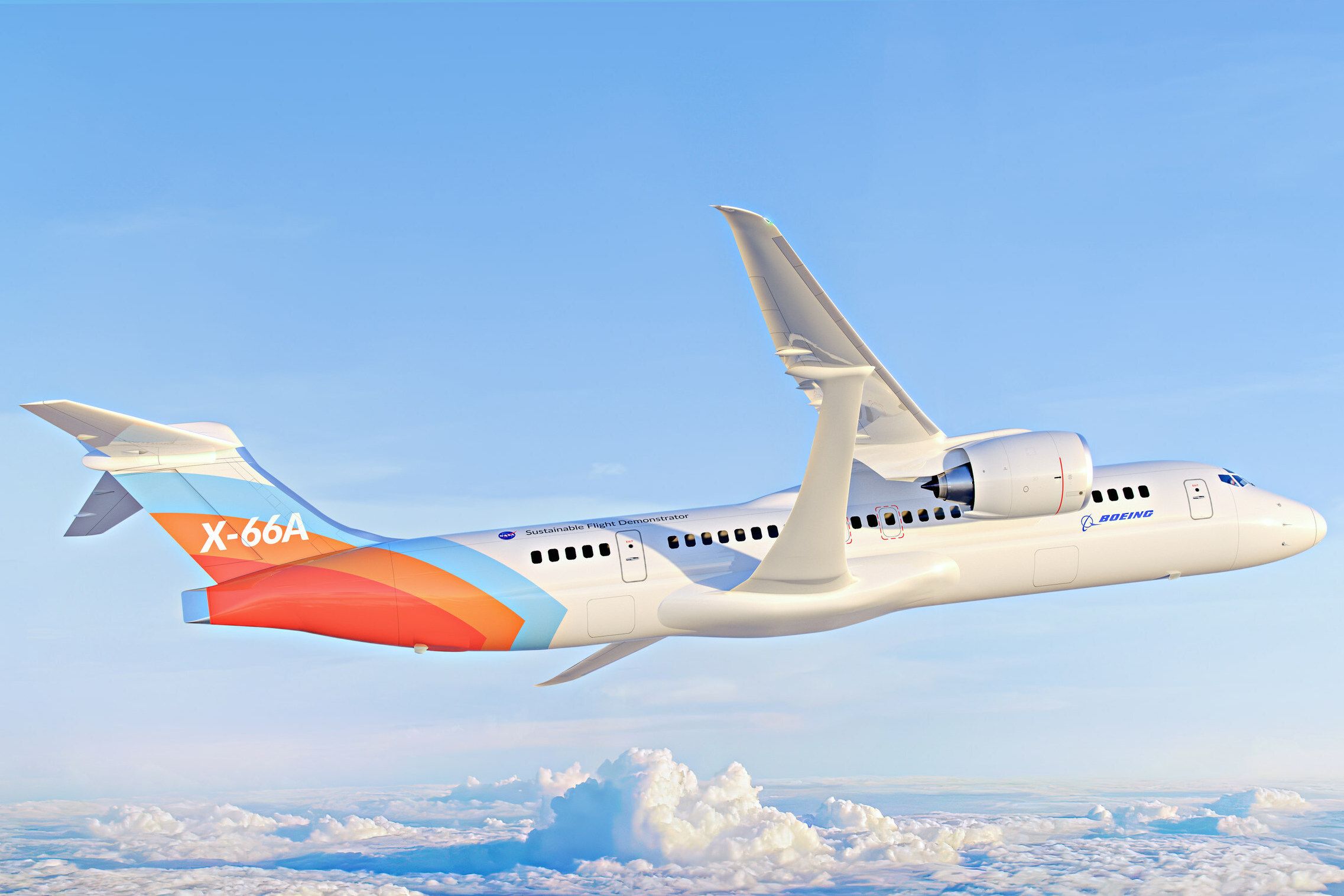Summary
- NASA and Boeing are working together to develop a new aircraft design, called the X-66A, that aims to significantly reduce greenhouse gas emissions in aviation.
- The X-66A is a modified McDonnell Douglas MD-90, which was acquired by Boeing in March 2021.
- The innovative design of the X-66A, including ultrathin wings and new struts, could lead to fuel use reductions of over 30%, according to estimates. NASA and Boeing are committed to achieving net-zero greenhouse gas emissions in aviation by 2050.
Net-zero aviation may seem like a rather lofty and, at times, even insurmountable challenge. Nonetheless, there are bold innovators across the world of aviation attempting to make that happen. Conventional jet fuel, aircraft designs, and flight systems all rely on carbon emissions for flight, and thus, it is rather easy to determine that the future of green aviation lies in embracing, testing, and adopting new technologies.
One group of innovators at the National Aeronautics and Space Administration (NASA) has partnered with Boeing, targeting a new aircraft design that could drastically reduce greenhouse gas emissions. This concept involves a Truss-Braced wing concept, in which aircraft wings are supported by trusses beneath the engines which attach to the fuselage.
Earlier in August, Boeing’s selected aircraft for the venture—a McDonnell Douglas MD-90—arrived at the manufacturer’s Palmdale facility for conversion to a Transonic Truss-Braced Wing (TTBW) aircraft. In this article, let’s take a deeper look at the experimental X-66A jet and its role in NASA’s Sustainable Flight Demonstrator project.
Where is this plane coming from?
When examining Boeing’s new test aircraft, an interesting question one might want to ask is where the plane is coming from. Well, according to the industry website planespotters.net, the aircraft has a fascinating service history.
Photo: Boeing
The aircraft is a nearly 25-year-old MD-90, which bears manufacturer serial number 53532 and rolled off of the assembly lines of the manufacturer’s Long Beach, California location. The aircraft was delivered first to Chinese carrier China Northern Airlines in 1999, where it remained until the airline ceased operations in 2003. Upon merging with legacy carrier China Southern Airlines, the former carrier transferred the MD-90 to its new parent company, where it would enter service in 2004.
Photo: Boeing
In 2011, the MD-90 was acquired from China Southern by US legacy carrier Delta Air Lines, at which point it would receive a US registration of N962DN. The aircraft remained in service with Delta for nearly a decade when Boeing acquired the jet in March 2021.
What’s next for the X-66A?
Modifications on the aircraft will begin soon, and flight testing is expected to begin by 2028. Boeing’s leadership is undoubtedly excited about the project and its potential, with Boeing Chief Technology Officer Todd Citron sharing the following words in a statement following the aircraft’s delivery to the modification site:
“This marks an important step in the Sustainable Flight Demonstrator project, advances Boeing’s commitment to sustainability and brings us closer to testing and validating the TTBW design.”
This aircraft will boast ultrathin wings supported by new struts and will offer higher aspect ratios. Boeing and NASA’s latest collaborative estimates believe that the innovative design could lead to fuel use reductions of over 30%.
This aircraft is just one of many projects that are part of NASA and Boeing’s collaborative Subsonic Ultra Green Aircraft Research (SUGAR) program. NASA’s goals are high, with a target to achieve a net-zero greenhouse gas emission total for the aviation industry as a whole by 2050.
Source: PR Newswire



